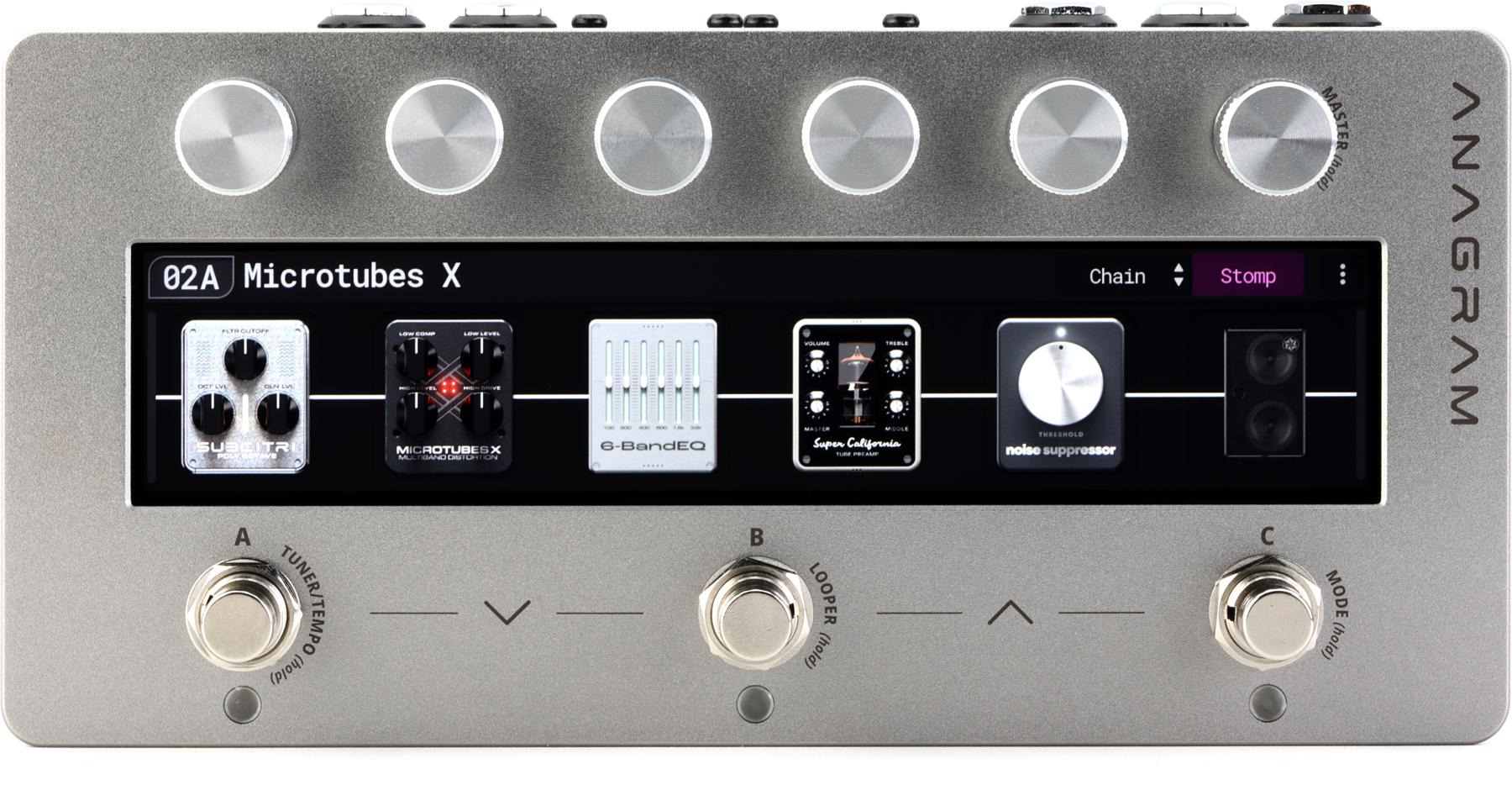Steve Carr could probably build fantastic Fender amp clones while cooking up a crème brulee. But the beauty of Carr Amps is that they are never simply a copy of something else. Carr has a knack for taking Fender tone and circuit design elements—and, to a lesser extent, highlights from the Vox and Marshall playbook—and reimagining them as something new.
Those that played Carr’s dazzling original Skylark know it didn’t go begging for much in the way of improvement. But Carr tends to tinker to very constructive ends. In the case of the Skylark Special, the headline news is the addition of the Hiwatt-inspired tone section from the Carr Bel-Ray, a switch from a solid-state rectifier to an EZ81 tube rectifier that enhances the amp’s sense of touch and dynamics, and an even deeper reverb.
Spanning Space Ages
With high-profile siblings like the Deluxe, Bassman, Tremolux, and Twin, Fender’s original Harvard is, comparatively, a footnote in Fender’s wide-panel tweed era (the inclusion of Steve Cropper’s Harvard in the Smithsonian notwithstanding). But the Harvard is somewhat distinctive among tweed Fenders for using fixed bias, which, given its power, makes it a bridge that links in both circuit and sound to the Princeton Reverb. The Skylark Special’s similar capacity for straddling tweed and black-panel touch and tone is fundamental to its magic.
Like the Harvard and the Princeton, the Skylark Special’s engine runs on two 6V6 power tubes and a single 12AX7 in the preamp section. A 12AX7 and 12AT7 drive the reverb and the reverb recovery section, respectively, and a second 12AT7 is assigned to the phase inverter. (The little EZ81 between the two 6V6 power tubes is dedicated to the rectifier). Apart from the power tubes and the 12AX7 in the preamp, however, the Skylark Special deviates from Harvard and Princeton reverb templates in many important ways. Instead of a 10" Jensen or Oxford, it uses a 50-watt 12" Celestion A-Type ceramic speaker, and it includes midrange and presence controls that a Harvard or Princeton do not. It also features a boost switch that manages to lend body and brawn without obliterating the core tone. There is also, as is Carr’s style, a very useful attenuator that spans zero to 1.2 watts. Alas, there is no tremolo.
“I’d wager the Skylark Special will be around every bit as long as a tweed Harvard when most of your printed-circuit amps have shoved off for the recycler.”
It goes without saying, perhaps, that the North Carolina-built Skylark Special is made to standards of craft that befit its $3K-plus price. Even still, Carr upgraded nine of the coupling capacitors to U.S.-made Jupiters. They also managed to shave six pounds from the Baltic birch cabinet weight—reducing total weight to 35 pounds and, in Steve Carr’s estimation, improving resonance. Say what you will about the high price, but I’d wager the Skylark Special will be around every bit as long as a tweed Harvard when most of your printed-circuit amps have shoved off for the recycler.
Sweet Soulful Bird
Fundamentally, the Skylark Special launches from a Fender space. But this is a very refined Fender space. The bass is rich, deep, and massive in ways you won’t encounter in many 12-watt combos, and the warm contours at the tone’s edges lend ballast and attitude to both clean tones and the ultra-smooth distorted ones at the volume’s higher reaches. All of these sounds dovetail with the clear top end you imagine when you close your eyes and picture quintessential black-panel Fender-ness. The presence and midrange controls, along with the 50-watt speaker, lend a lot in terms of scalpel-sharp tone shaping—providing a dimension beyond classical Fender-ness—especially when you bump the midrange and turn up your guitar volume.
The tube rectifier, meanwhile, shifts the Skylark Special’s touch dynamics from the super-immediate reactivity of a solid-state rectifier to a softer, more-compressed, more sunset-hued kind of tactile sensitivity. But don’t let that lead you to worry about the amp’s more explosive capabilities. There is more than enough high-midrange and treble to make the Skylark Special go bang.
Anglo and Attenuated Alter Egos
The Hiwatt-inspired setting is still dynamic, but it’s a little tighter than the Fullerton-voiced setting. There’s air and mass enough for power jangling or weighty leads. The differences in the Bel-Ray’s tube selection (EL84 power tubes as well as an EF86 in the preamp) means the Skylark Special’s version of the Hiwatt-style voice is—like the amp in general—warm and round in the low-mid zone and softer around the edges, where the Bel-Ray version has more high-end ceiling and less mellow glow in the bass. It definitely gives the Skylark Special a transatlantic reach that enhances its vocabulary and utility.
Attenuated settings are not just practical for suiting the amps to circumstances and size of space you’re in; they also offer an extra range of colors. The maximum 1.2 watt attenuated setting still churns up thick, filthy overdrive that rings with harmonics.
The Skylark Special’s richness and variation means you’ll spend a lot of time with guitar and amp alone. Anything more often feels like an intrusion. But the Skylark Special is a friend to effects. Strength in the low-end and speaker means it humors the gnarliest fuzzes with grace. And with as many shades of clean-to-just-dirty tones as there are here, the personalities of gain devices and other effects shine.
The Verdict
Skylark Special. It’s fun to say—in a hep-cat kind of way. The name is très cool, but the amp itself sounds fabulous, creating a sort of dream union of the Princeton’s and Harvard’s low-volume character, a black-panel Deluxe’s more stage-suited loudness and mass, and a zingier, more focused English cousin. It can be sweet, subdued, surfy, rowdy, and massive. And it works happily with pedals—most notably with fuzzes that can make lesser low-mid-wattage amps cough up hairballs. The price tag smarts. But this is a 12-watt combo that goes, sonically speaking, where few such amps will, and represents a first-class specimen of design and craft.




















